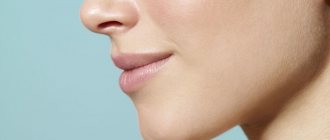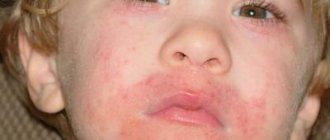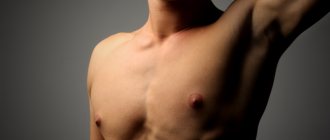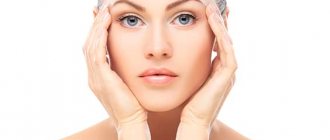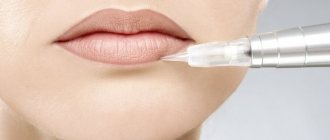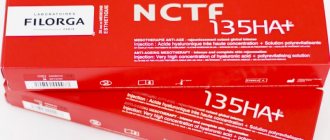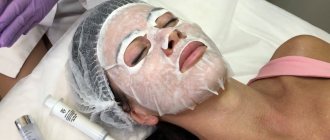Categories
November 11, 2022 0 0
The word balneotherapy is derived from the Latin balneum - bath and therapia - treatment. An interesting fact: even the word balneum itself initially meant “to heal pain,” and then water procedures began to be called that. This proves that balneotherapy, meaning the use of water, showers, and irrigations, is one of the oldest types of treatment, used even before ancient times. It has been popular throughout the centuries; modern science has used evidence-based methods to confirm the effectiveness of the influence of a certain environment on human health. Balneological resorts exist all over the world and are always popular among people who want to get rid of various diseases.
What is balneotherapy?
Balneotherapy is treatment using external water. The procedure usually involves swimming in natural mineralized water or pools with artificial mineralization, using a shower, and local irrigation. Among the features of the method:
- The water is almost always running: there is no chlorination, as in conventional swimming pools, so either a natural feature is used to maintain cleanliness, or the tank is built in such a way as to maintain hygiene.
- Patients do not make active movements - swimming in the healing waters is leisurely, usually they just sit.
- Stay in the pond is limited: from 20 to 40 minutes, depending on the indications for the patient. Exceeding this period is undesirable and may even be hazardous to health.
For treatment, mineral springs with carbonated waters, sulfur and other enriched various elements are used. Among the main types:
- Radon;
- Sulfide;
- Saturated with carbon dioxide;
- Ferrous;
- Iodine-bromine;
- Salty.
The use of this or that water is based on the indications, the basic properties of the minerals and other substances contained in the water.
Drinking treatment with mineral waters
Drinking treatment with mineral water is the most common method of internal intake of mineral waters. When drinking water, it irritates the mucous membranes of the gastrointestinal tract (oral cavity, esophagus, stomach and part of the duodenum).
The main indicators of the difference between mineral waters and fresh waters are their chemical composition and degree of mineralization. Salinity is the amount of substances dissolved in water per unit volume of water (usually this amount is expressed in grams per liter).
According to these parameters, mineral water is divided into:
- dining room, with mineralization less than 1 g/l.;
- medical-dining room, with mineralization from 1 to 10 g/l.;
- medicinal, with mineralization from 10 to 15 g/l.
For treatment, medicinal table and medicinal mineral waters are used, which should be taken only after consultation with a doctor.
For drinking treatment, mineral waters with higher mineralization can also be used, but only after dilution with regular drinking water.
Mineral waters have exceptional healing powers due to the fact that they contain more than fifty chemical elements. In such water they are found in the form of undissolved salts and simple ions, in various combinations and concentrations. The most common positive ions are calcium, potassium and sodium, and negative ions - sulfate, chlorine and bicarbonate. The presence in small quantities of many chemical elements, such as zinc, iron, bromine, fluorine, arsenic, manganese, cobalt, copper, boron and iodine, allows you to actively interfere with metabolic processes, since all these elements are essential components of various enzymes in the body.
The temperature of mineral water also plays an important role in the treatment of various diseases. Thus, warm water reduces the secretion of the stomach and intestines and relieves their spasms. At the same time, the transition of water from the stomach to the intestines slows down, the intestinal muscles relax, causing stool retention.
Cold water stimulates the production of saliva, secretion of the stomach and intestines. It quickly passes from the stomach to the intestines, increases its peristalsis and, as a result, has a laxative effect.
Mineral water stimulates the secretion of various hormones of the gastrointestinal tract and promotes the functioning of the pancreas.
More than a thousand mineral water sources are known on the territory of the Russian Federation alone, most of which are suitable for drinking treatment.
Mineral waters are named according to the predominant elements of their ionic composition.
The therapeutic effect of mineral waters depends on three factors: chemical, temperature and mechanical.
The main therapeutic effect is, of course, the chemical factor. The ions that are part of mineral waters cause intense salivation and affect the secretion of the stomach.
Calcium ions stimulate intestinal motor activity and heart contractility, increase blood clotting and stimulate the growth of teeth and bones.
Sodium and potassium cations increase intestinal motility, promote the production of hydrochloric acid and the excretion of bile, and also have a laxative effect.
Magnesium ions restore magnesium deficiency that develops in certain diseases and stimulate the metabolism of proteins and sugars.
Chlorine ions in the stomach mix with hydrogen and form hydrochloric acid. They stimulate fat metabolism in the intestines and liver, as well as the diuretic and choleretic functions of the body.
Hydrocarbonate ions in the stomach stimulate its secretion and inhibit secretion in the intestines. They also dilute sputum and increase the secretion of mucus from the bronchi.
Sulfate ions reduce gastric secretion, accelerate the movement of food from the stomach to the intestines, and also have a laxative effect. In addition, they promote the removal of bile from the liver.
Iron ions transport oxygen to tissues and organs, and enhance metabolism. They also help replenish iron deficiency in anemia and stimulate the formation of hemoglobin.
Thus, mineral water during drinking treatment helps restore impaired functions of various parts of the gastrointestinal tract and normalizes metabolism in the body.
Indications and contraindications
Like other methods of therapy, correcting health pathologies using water has its own indications and contraindications. The water that balneological resorts use for treatment has a beneficial effect in some conditions and can be dangerous in others. Among the indications:
- Salt waters – for rheumatism, arthritis, gout, the need to improve metabolism;
- Hydrogen sulfide – arthritis, skin diseases, stimulate the production of skin collagen;
- Radon - improve metabolism, blood circulation, correct the functioning of the endocrine system;
- Carbon dioxide – for hypertension and hypotension, improves blood circulation;
- Glandular - stimulate the immune system, used to treat gynecological diseases;
- Iodine-bromine - for some endocrine disorders, nervous diseases, hypertension, improve vascular tone.
At the same time, there are a number of contraindications for balneotherapy:
- Contraindications to a specific element are situational;
- Oncological diseases;
- Tuberculosis in the active phase;
- Acute inflammatory processes;
- Heart attack and stroke in the acute stage (up to a year);
- Aneurysm, thrombophlebitis and other acute vascular lesions;
- Diabetes mellitus in the stage of decompensation.
In most cases, pregnancy can also be considered a temporary contraindication, as well as lactation. Doctors believe that the risk to the fetus outweighs the possible benefit to the mother.
Inhalations
Inhalation is the inhalation of air saturated with finely sprayed water. Most often, mineral water inhalations are prescribed for diseases of the upper respiratory tract, but recently their use has become frequent for the general health of the body in cases of bronchial asthma, hypertension, silicosis and other diseases.
The mechanism of action of mineral water during inhalation is extremely simple: water is sprayed in special devices, resulting in the creation of many tiny charged particles called air ions. When inhaled, tiny particles of water penetrate deep into the respiratory tract, reaching even the small alveoli. These particles settle on the mucous membranes, irritating and liquefying the mucus on the walls, as well as moistening the airways.
How the procedures are carried out
Balneotherapy is a pleasant and comfortable treatment from which patients truly enjoy the process. There are main types of procedures:
- Shared or individual baths – patients stay in them for a certain period of time.
- Local baths - separately for arms, legs, etc., are used when local therapy is needed.
- Contrast baths - this implies a temperature difference, this technique is effective for varicose veins, neurocirculatory dystonia and other disorders of the blood circulation and nervous system.
- Local shower - concentrated water is used, irrigation does not last as long as a bath.
- Rising shower - for diseases of the genital organs, hemorrhoids, skin diseases.
- A massage shower with sulfide water is effective for diseases of the musculoskeletal system and pathologies of the peripheral nervous system.
- Underwater shower-massage - a bath and shower are used simultaneously, which helps to increase the intensity of the impact of water. It is used in the treatment of nervous diseases, obesity, and circulatory disorders.
At the resort, the patient can be offered several types of procedures. They alternate, sometimes less intense ones are chosen first, and gradually intensified to achieve the best effect.
Baths
Baths are the most widely used balneological procedures.
Depending on the temperature parameters, baths are divided into:
- cold (+20 degrees and below);
- cool (+21-+33 degrees);
- indifferent (+34-+36 degrees);
- warm (+37-+38 degrees);
- hot (above +39 degrees).
Based on the chemical composition of water and other indicators, the following baths are distinguished:
- mineral baths (sulfide, salt, iodine-bromine);
- fresh baths (from tap water);
- radon baths;
- aromatic (turpentine, sage, pine);
- vibration baths;
- gas baths (oxygen, pearl, carbon dioxide, nitrogen);
- combined baths (carbon dioxide and sulfide);
- Kneipp baths (contrast baths) – periodic alternation of exposure to cold and warm water. Helps strengthen the immune system and tones the veins. It is recommended to always end the procedure with cold water;
- baths with a gradual increase in temperature (according to Gauff).
Temperature has a big influence when taking baths.
Cold baths cause an immediate constriction of blood vessels followed by their dilation. At the same time, the muscular and nervous systems are toned, as well as the body’s thermoregulation mechanism is trained.
Hot baths increase blood supply, resulting in a large amount of heat entering organs and tissues. At the same time, the intensity of oxidative processes in places of pathological phenomena increases, which leads to an acceleration of recovery processes. Immunity increases.
Taking baths close to skin temperature (indifferent baths) does not have a particular effect on the cardiovascular system and does not irritate skin receptors. Such baths cause inhibition in the cerebral cortex and reduce the excitability of the nervous system. Therefore, they are often used for various dyskinesias, hypertension, muscle and heart spasms, as well as hypersthenic neuroses.
The best resorts in Europe
Europe is famous for its balneological resorts. Many of them are several centuries old, and some are even thousands of years old, since they were known back in ancient times. The most famous:
- Baden-Baden is a famous German resort with thermal springs, baths, and mineral waters. World-famous places of rest and treatment allow you to get rid of nervous and gynecological diseases, and recover from severe acute diseases such as pneumonia. Gynecological diseases and even depression are treated here.
- Bad Hall in Austria is the best way to correct the endocrine system with iodine-rich water. They treat diseases of the thyroid gland, atherosclerosis, even the consequences of radiation sickness. A total of eleven sources will be offered.
- Spa Jáchymov in the Czech Republic – radon baths, tested by many thousands of patients, are located here. The famous Karlovy Vary is also located here. The healing effects of the waters are achieved by a combination of carbon dioxide and the high temperature of the springs.
- Abano Terme in Italy is a resort that has been known since ancient times, because it was used by the ancient Romans to get rid of neuroses, chronic joint pain and systemic inflammatory diseases, such as arthrosis and arthritis. More than a hundred indoor pools and springs.
When choosing a European resort, it is advisable to first visit a doctor to rule out possible contraindications, and also choose the most suitable place for your trip.
Share
To favorites
No comments yet. Be the first to comment...

